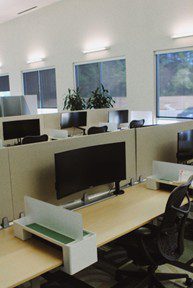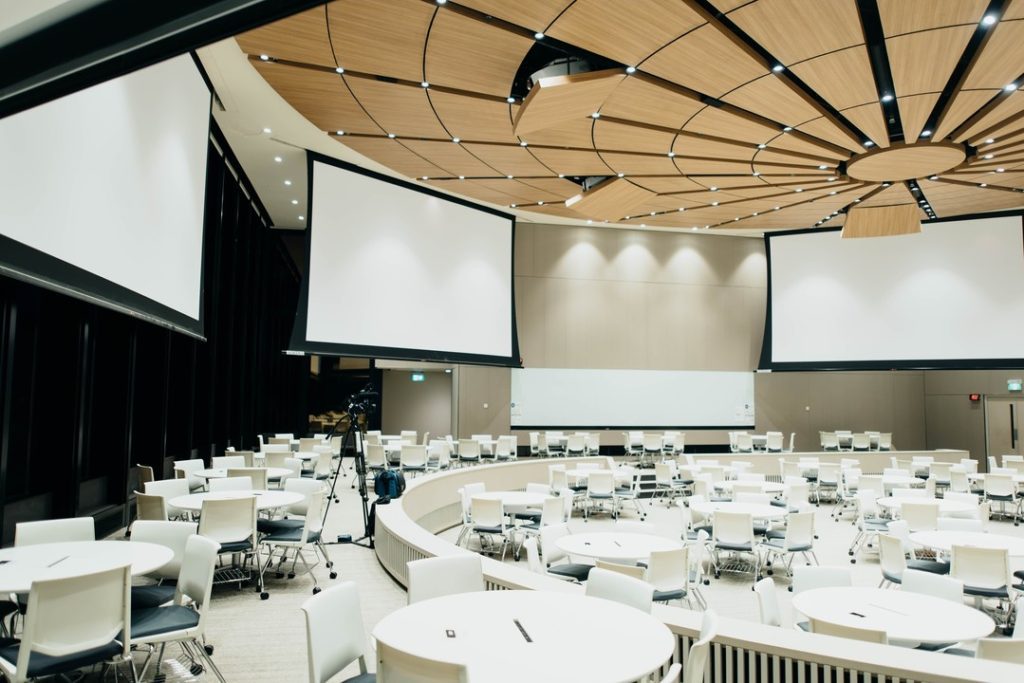Not all AV problems are obvious. Some don’t cause meeting crashes or speaker feedback; they just…fade into the background. A muffled voice here. A mic that misses half the sentence. These subtle issues might seem minor in the moment — but over time, they take their toll.
We’re calling it the silent AV crisis, and it’s quietly affecting how teams focus, collaborate, and perform across enterprise organizations.
What is the Silent AV Crisis?
We’ve all experienced the untimely and catastrophic technology failures that pull the emergency brake handle on a meeting or event. This is not that kind of issue. Unlike dramatic equipment failures or tech outages, the silent AV crisis is made up of persistent, low-grade issues that chip away at productivity and engagement, creating minor frustrations and creating an overall lack of confidence in a technology system. Think:
- Poor speakers that make it hard to hear remote participants
- Inconsistent audio levels across rooms
- Echo, distortion, or ambient noise
- Inadequate coverage, resulting in dead spots in large or multi-use spaces
These issues don’t always get flagged because they’re easy to just ignore in favor of maintaining productivity, or at least, it feels that way. People talk louder or repeat themselves. They lean closer to the mic or just stop speaking up altogether. The AV still “works,” technically, but it doesn’t really work well.
It’s a Bigger Deal Than You Think
It’s tempting to treat these problems as minor inconveniences, but research says otherwise. A survey from EPOS found that 87% of workers experience audio issues during virtual meetings, whether they are at home or in the office.
It doesn’t stop at meetings, though. The survey also shows that 42% of workers report that background noise affects their focus, costing them productivity. Whether from a lack of private rooms or ambient noise gone overboard, the consequences are the same: mounting frustration for individuals, not to mention the broader impact on client communications and team morale.
What Causes These Issues?
The root of the problem comes down to poor design, poor room acoustics, or a lack of holistic planning and coordination.
Enterprise spaces are built to be dynamic: think open-floor offices, flexible meeting areas, all-hands spaces, and hybrid conference rooms. The challenge is that AV systems don’t always flex with those changes. Without expert consultation, teams end up patching together audio setups without addressing the real source of the issue — how sound behaves in the space.
Warning Signs: Is Your AV System Failing You?
The silent AV crisis often goes unnoticed until it starts affecting bigger outcomes. Here are a few signs to look out for:
- Certain rooms are always empty because of technology issues
- Meeting fatigue is on the rise, especially for hybrid calls
- Frequent requests to fix your AV system, only to discover it’s working as it was “designed”
If your team is tuning out, or just working around, AV hiccups, they are already feeling the effects of the silent crisis. And while these issues might seem minor in the context of a single meeting, they compound fast across a large organization.
Solving the Silent AV Crisis
Addressing the crisis doesn’t require a full system overhaul, just a smarter approach. At AV-Tech, we start by learning how your teams actually use the space. That means listening to your frustrations, walking the rooms, and identifying areas where technology has been or is a pain point.
We analyze how sound behaves in each environment and raise issues that may otherwise go unnoticed. Small adjustments such as planful positioning of microphones and speakers, audio zoning, or improving acoustic treatments, can have an outsized impact on speech clarity and overall meeting quality. The focus is not flashy tech but designing for experience, so that meetings feel natural, calls stay focused, and your AV system quietly does its job in the background.
Additionally, another important area of focus that can greatly assist in maintaining your AV systems peak functionality, is consistent preventative maintenance visits from a qualified AV team member. This approach will address the minor issues that arise during the annual or bi-annual visits, allowing for greater meeting space utilization rates, instead of rooms being offline for extended periods of time due to non-optimized experiences from your technology.
If your teams are constantly working around technology hiccups or avoiding certain rooms altogether, it’s time to take an active approach and make sure your technology systems are operating as well as the day they were commissioned. Reach out to schedule a consultation and we’ll make sure your message comes through, loud and clear.



